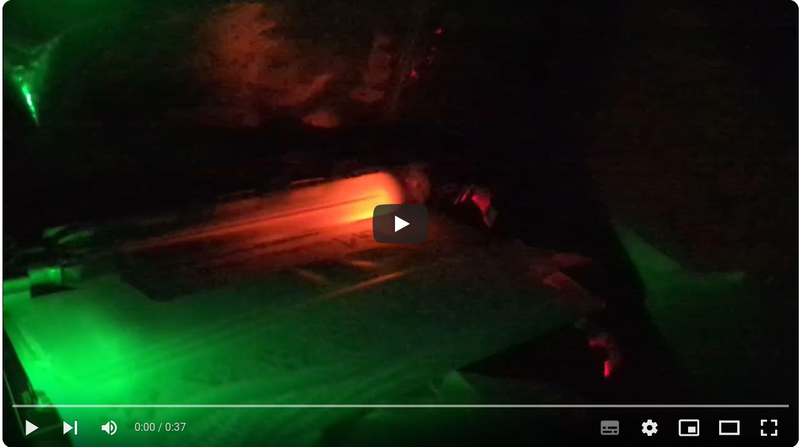| Author |
 Topic Topic  |
|
|
ullix
    
Germany
1235 Posts |
 Posted - 06/01/2024 : 03:05:34 Posted - 06/01/2024 : 03:05:34


|
See a video of a Geiger tube lighting up:
https://www.youtube.com/watch?v=IbL_AeD6jAA
In the example the counter is a FNIRSI GC-01 with tube J321 in the presence of a radioactive sample producing about CPS=40.
I don't know whether the tube is damaged or acting normally. I had noticed that this tube is very light sensitive.

|
Edited by - ullix on 06/02/2024 01:34:18
|
|
| Reply #1
EmfDev
    
2375 Posts |
 Posted - 06/05/2024 : 13:50:19 Posted - 06/05/2024 : 13:50:19


|
Since we do not have much experience with these. chatgpt answer is below. I think I would go with number 2 since the lights seem to be coming from the terminals.
Tube voltage is supposed to be around ~320-430V.
Gas Ionization: When a high-energy particle interacts with the gas inside the GM tube, it ionizes the gas molecules, creating a brief flash of light. This phenomenon is known as the "gas scintillation" effect. The flash of light is very brief and is typically not visible to the naked eye, but it can sometimes be observed under specific conditions or with sensitive equipment.
Electrical Discharge: At high voltages, such as the 770V you mentioned, the electrical potential across the electrodes of the GM tube can cause a discharge when ionization occurs. This discharge can manifest as a visible spark or flash of light between the electrodes. This is more likely to occur at higher voltages or when the GM tube is operating in a high radiation environment.
Optical Feedback: Sometimes, the flash of light produced by the ionization process can cause optical feedback within the GM tube, resulting in a visible light emission from the terminals. This effect can be influenced by factors such as the design of the GM tube and the surrounding environment.
Electrode Emission: In some cases, especially if the GM tube has been damaged or is operating under extreme conditions, there may be emissions from the electrodes themselves due to electrical breakdown or other factors. This emission can manifest as visible light. |
 |
|
| Reply #2
ullix
    
Germany
1235 Posts |
 Posted - 06/05/2024 : 22:47:37 Posted - 06/05/2024 : 22:47:37


|
CONGRATULATION - for the first post in this forum employing ChatGPT!
I did a closer inspection and found: gas-discharges were NOT visible up to an Anode Voltage of 760 V. From 770 V onwards there were visible flashes; very heavy flashing at 1000 V and higher.
The effect itself is known since the invention of the Geiger principle. Quenching gases can mitigate this effect. But even their action can be overcome when the voltage is high enough and a decent radioactive source (CPS > 40) nearby.
It should be possible to see with any Geiger tube, provided you apply high enough voltage and count rate.
|
 |
|
| Reply #3
EmfDev
    
2375 Posts |
 Posted - 06/11/2024 : 15:08:54 Posted - 06/11/2024 : 15:08:54


|
| ZLM also has similar opinion as yours that the light is coming from the ionization with very high voltage. |
 |
|
| |
 Topic Topic  |
|

